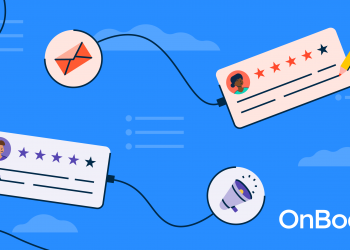Concerns about inflation have greatly affected competition in e-commerce.
Everyone wants to rely on their buying routines and consumer habits, but times are changing. Consumers who preferred to wait for discounts have now shortened their waiting times due to the rise of everyday expenses. If you’re an online retailer, you should act before your competitors do to keep those fast-buying customers.
Unfortunately, compulsory price increases undermine the strong bonds that brands create to maintain customer loyalty. With inflation-grabbing headlines, promotions and discount campaigns are losing their visibility and effectiveness.
Online sellers are also confused about how to price their products within a competitive environment when all the standards are shifting. So what can be done to alleviate this situation, and which strategies can you use to avoid failure?
Making wise investment and spending decisions to fight inflation
Online retailers can take steps against the changing habits of consumers caused by inflation. They can continue to increase their prices at certain rates, strengthen customer loyalty policies, keep their supply well-stocked, renew those reserves with bulk purchases, adopt competitive pricing strategies, and communicate with users about cost changes.
On the other side, consumers are adopting new buying habits, like spending less on premium brands, targeting low-cost retailers, considering renewable shopping options, and researching prices in detail before purchasing.
Even though price hikes are continuing, the industry is expected to expand its growth in 2022 and beyond. When dealing with high inflation, making thrifty choices is one of the best options. Online buyers may take advantage of discounts or turn to “buy now, pay later” alternatives.
To save money wherever they can, many shoppers are now switching stores or moving their shopping online. While there are no guarantees, looking for high-interest savings accounts and investing models supported by artificial intelligence (AI) can help protect capital.
The impact of e-commerce inflation on consumers
As expected, e-commerce inflation affects the way consumers shop online. People are cutting back on nonessential products and buying larger quantities to get bulk discounts. Most consumers will redirect their budgets to essential goods such as food or toiletries.
Consumers have to keep spending
Inflation is reducing their spending power, but this doesn’t mean they stop altogether. Instead, most consumers are more concerned about where they spend their money and on what. Grocery sales can actually increase during periods of high inflation.
People eat out less frequently in response to rising prices, and they end up spending more on food products they’re going to consume at home. Since they’re not spending $20 on a meal at a restaurant, when they go to the grocery store, they don’t have to buy the least expensive product.
The outcome of inflation on various groups of consumers
Consumers’ purchasing power may change due to inflation, but how they’re affected depends on their income levels. The same goes for retailers. As your customers face a change in buying habits, it’s becoming very rare that market habits are changing, too.
High-earning consumers can accumulate savings by forgoing costs such as dining out, entertainment, and nightlife. Having greater budget flexibility means that this particular consumer segment won’t see as much negative impact compared to consumers who earn less. Even while rising costs might irritate high-income customers, their changing habits won’t hugely affect the market.
However, those with less money face a more serious problem. Consumers with low or middle incomes are more likely to be forced to adjust what and how they buy. Price hikes may permanently alter their shopping choices.
Consumers that have to modify their shopping habits do so in several ways. For example, choosing lower prices or quantities is one of the most adopted strategies. When prices go up, they respond directly by looking for less expensive brands. If it’s not possible, most consumers prefer to buy fewer quantities. However, in the end, there are better choices than both.
Going after promotions and discounts is another option. When consumers buy with discounts, but prices still seem high, they can reduce their nonprimary expenses and delay purchases. For items that can’t wait, buying in bulk or purchasing goods at a promoted price (or both!) may work well.
It’s also important to note that some discounts and promotions can be misleading at such times. These dishonest tricks, combined with the constantly rising prices due to inflation, may discourage buyers, but they have to stay on top of these changes.
Tomorrow’s price may not be today’s price. One of the most important tasks is doing targeted research and frequently following up on changes.
What can sellers do to handle e-commerce inflation and soothe consumers’ concerns?
Handling e-commerce inflation isn’t easy from the sellers’ side, but you can work on many different elements to make sure that your business stays safe. To reduce the effects of inflation on e-commerce businesses, sellers can focus on brand building, raising prices, maintaining their supply, and adopting different pricing strategies.
Business owners need to know precisely how to price their products correctly to protect their margins. Suppose you examine your premium brand’s sales with regard to inflation. If you figure out that your customers are no longer buying premium goods, you could respond by launching a lower-tier or value brand. Remember, store brand sales tend to increase during periods of inflation.
Strengthen customer loyalty
To continue to attract customers to your products, create a unique identity and loyal crowd.
Doing so can boost your credibility and customer loyalty. To better build your brand, you can design product inserts, market your products by crafting a multi-channel retailing strategy, utilize your e-commerce buyer persona materials, and strengthen your marketing strategies.
Raise prices
Increasing your prices could decrease demand for your products, but this is not the case now because inflation rates are so high that your competitors also have to bump up pricing. Higher prices can ultimately boost profit margins and stop inventory from running out.
Moreover, there are e-commerce systems that let Amazon and Walmart sellers set up individualized product alerts. These alerts warn you whenever the price of any product you follow changes so that you can adjust their pricing appropriately to maintain competitiveness.
Maintain stock
Due to a lack of manufacturers, keeping a robust inventory stock is more crucial than ever since it will set your company apart from rivals who can’t fill orders. Bulk purchases from suppliers could be worthwhile if the price is right.
If your product is the only one available, customers will increase their demand for your brand. For this reason, bracing the strength of your pricing is critical.
Price competitively
Even when constantly rising prices are normalizing in the eyes of consumers, you should still make moves to stay ambitious. Follow the instant price changes made by your competitors.
Automated pricing is the preferred method of many e-commerce sellers. Consumers have also started to lean toward sites where the prices of the products are frequently compared among the most wanted brands.
Communicate about price changes
Getting through price increases without losing customers is a big challenge, but there are plenty of strategies to keep customers loyal even if your products become more expensive. Usually, companies inform their customers about price decreases to boost sales.
But due to current inflation, you should explain why your prices have changed before customers discover this and switch to your competitors. Even if inflation causes compulsory price increases, explaining the situation builds trust and creates an honest relationship. Transparency is key.
Read the signs before inflation strikes
No matter what the conditions are, market and consumer habits can adapt to these difficulties. You can think of it like an invisible hand. Somehow this invisible hand is keeping the market afloat.
The problem of inflation affects the market and consumers, and everyone is examining how to withstand this effect. Businesses and consumers from all ranges of life are struggling to get through this period together.
The effects of inflation on consumers and businesses are many, and they should know how to protect themselves financially. The key is to be aware of the early signs of inflation and avoid a vicious circle of dysfunctional pricing because of rising inflation.
A downturn can be mentally taxing. Here’s how you can successfully manage a business during a downturn and fight back.
Source by learn.g2.com











